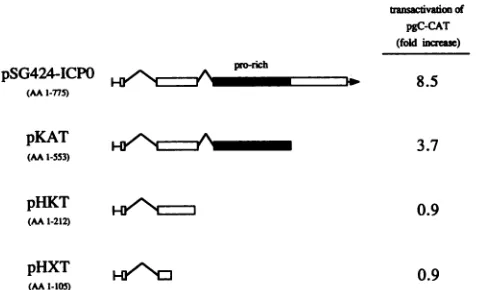Identification of dominant-negative mutants of the herpes simplex virus type 1 immediate-early protein ICP0.
Full text
Figure



Related documents
if IL-4 production at the time of challenge might be required for virus clearance, viral titers in the lungs and noses of IL-4 2 / 2 mice were compared to those in the C57BL/6
By immunoscreening of a cDNA library from HHV-7-infected cells with monoclonal antibody (MAb) 5E1, directed to the proteins of the pp85 complex, we mapped the gene encoding pp85 to
SENTHIL NATHAN, solemnly declare that the dissertation titled “COMPARATIVE STUDY OF ONDANSETRON, GLYCOPYRROLATE, METOCLOPRAMIDE PLUS DEXAMETHASONE IN
We coexpressed various combinations of the rotavirus structural proteins of single-layered (core) and double-layered (single-shelled) capsids from baculovirus vectors in insect
Comparison of the binding and replication prop- erties of these mutants confirmed the importance of sequences within the 18-bp element for E1 binding and origin function,
Thus, some of the EIAV enhancer motifs that have been shown to be important in tissue culture cells do not interact with monocyte or macrophage nuclear extracts. Conversely, the
We find that Rep68 is capable of binding to a linear DNA sequence that is contained within a 25-bp sequence of the A stem of the adeno-associated virus (AAV) terminal repeat proximal
Using an in vivo approach, we isolated two mouse-neurovirulent PV-1 mutants in the mouse central nervous system after a single passage of PV-1/Mahoney inoculated by the